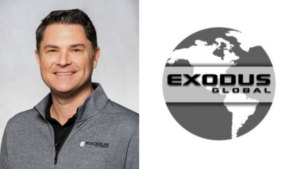In the mining industry, a range of advanced technologies optimize fleet management, ensuring the right material is moved to the right location at the right time, avoiding added emissions caused by material rehandling.
SMS Equipment
Emerging emission reduction strategies
At present, there are hundreds of technology solutions that help reduce GHG emissions from heavy equipment. Some are focused on the machine’s engine and working components. Others impact how efficiently a machine is utilized.
Brown divides these into two major categories: transitional solutions and step-change initiatives.
Transitional solutions provide incremental improvements on emissions. At the mechanical level, Tier 4 engine technology, which has become a global standard, reduces particulate matter and nitrogen oxides while improving overall fuel efficiency. Electric drive trucks (EDTs) use diesel to power an electric drivetrain, an important step toward electrification. Some equipment, like the Komatsu PC8000-6 hydraulic shovel, can be directly connected to a source of electricity by tethered cable, removing the diesel engine, or engines, altogether.
Across the construction sector, a plethora of digital solutions drive equipment efficiency. Telematics provide important data on machine utilization so customers can hone their operations. Machine control increases productivity for dozers, excavators, and graders; by providing precise instructions on where and how each machine should operate, fewer machines are needed to complete the same work.
In the mining industry, a range of advanced technologies optimize fleet management, ensuring the right material is moved to the right location at the right time, avoiding added emissions caused by material rehandling. Others improve payload management, provide analytics on equipment health, and improve overall productivity. Autonomous haulage systems offer precise GPS routing and consistent machine operation, among many other benefits; with this added efficiency comes significant emissions reductions.
“These are all important technologies that will help,” says Brown. “Many have even become best practice. However, when it comes to meeting ambitious GHG reduction targets like the ones we’re seeing in the mining sector, they alone will not get companies to 2030 GHG targets or the goal of net zero by 2050.
“We need bigger movers to drive the reductions. That’s where we look to the step-change, zero-carbon solutions on the horizon.
“Consider the analogy of a passenger vehicle,” he adds. “The addition of a catalytic converter to an internal combustion engine significantly reduced emissions. The electric vehicle eliminated them altogether.”
One approach being explored by industry is to transition from diesel-powered engines to those that run on more sustainable fuel sources like renewable diesel or biodiesel. Work is in progress with OEMs and engine manufacturers to certify engine capabilities and performance for renewable fuels. Newer Komatsu equipment is already certified to operate on these alternatives.
“The current GHG benefits of renewable fuel solutions are largely due to credits and offsets connected to sustainable energy,” notes Brown. “Widespread adoption will be dependent on commercial-scale production of these fuels, which is still evolving. Even with significant investment in Canadian production facilities for renewable fuels, the expected capacity will not be enough to meet demand.”
Hydrogen, similarly, could replace diesel as a viable fuel source, whether in a direct combustion engine or in hydrogen fuel cells. Supply and safe storage are top considerations as prototypes are being developed around the globe for both mining and construction.
The most anticipated solution, according to Brown, is electrification.
“Powering fleets with electricity presents the greatest opportunity to our industry in the near-term,” he says. “The question is how we’ll use electricity across various platforms to help customers reach their net-zero targets.”
Pure battery trucks, static charging stations, and in-line charging, like trolley assist, are all new in their adoption, but rapidly evolving to overcome challenges such as battery weight, downtime for charging, and price.
Which option is best? The answer depends on a customer’s situation.
“The ideal customer solution takes advantage of a fuel source that’s local, abundant, and affordable,” advises Brown. “There isn’t a one-size-fits-all strategy here. The answer will have a strong regional dependency.”
In B.C. or Quebec, for instance, electric equipment powered by hydroelectricity may have the most impact on emissions. Operators in the oil sands can take advantage of large natural gas cogeneration facilities. For a remote operation in northern Canada, a diesel-powered machine with an electric drivetrain may be the most practical and efficient choice.
As decarbonization technology evolves and regional strategies become more defined, OEMs are developing equipment models that can adapt to the changing landscape.
“Power agnostic machines, like the trucks being developed by Komatsu, allow customers to best manage the power source that meets their needs on a common truck body,” shares Brown.
“The same truck that uses diesel to power an electric drivetrain today will be able to support the option of diesel or renewable diesel, trolley with diesel, trolley with battery, pure battery, and a hydrogen fuel cell with a battery. We’ll see these options roll out across mining and construction equipment over the next several years.”
Evolving opportunity for dealers
An evolving industry provides growing opportunity for heavy equipment dealers to partner with their customers in their decarbonization programs. Understanding both transitional and step-change solutions that can help customers reduce their CO2 emissions is just the beginning, Brown advises.
“Decarbonization isn’t a mountain to conquer. It’s more of a mountain range with four peaks: the equipment, which we manage well today; the energy infrastructure, where we will need to forge new partnerships; the digital software, where we already have experience; and operational consulting, where we can best help our customers manage change.”
Tanya Anand is principal of Covalent Communications
Read the full article here











